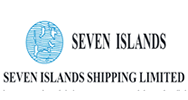Low prices to whet Pakistan’s LNG appetite; infrastructure poses challenges

Pakistan may take advantage of low spot prices and boost LNG imports in 2020 to meet the country’s growing demand for fuels amid declining output at home, but infrastructure constraints mean the South Asian country will only post a modest growth in inflows, analysts told S&P Global Platts.
With Pakistan turning out to be one of the fastest growing LNG markets since it first started importing in 2015 — imports rose to 8.4 million mt in 2019 from 6.8 million mt in 2018 — there was an urgent need to speed up import capacity expansions, which have been planned in order to absorb incremental inflows, they added.
“Pakistan represents a market that could take advantage of the low spot price environment and import more LNG to feed its growing natural gas demand. However, imports are close to capacity and have limited ability to grow significantly,” said Jeff Moore, manager, Asian LNG Analytics, at Platts Analytics.
He added that Platts Analytics expects only a modest growth in imports in 2020 from 2019 levels.
Pakistan’s LNG imports
“The underlying driver for LNG consumption growth in Pakistan has been a declining base of domestic production along with new import infrastructure, as the country has brought in two FSRUs, both at Port Qasim,” Moore said.
The benchmark for spot Asian LNG prices, JKM, has fallen more than 40% from the beginning of 2019 to about $5.20/MMBtu by the end of the year due to a wave of new supply from Australia and the US, and slowing demand growth in China.
Meanwhile, the DES West India assessment, which is a relatively better reflection of prices in the Indian subcontinent, was lower by more than 41% from the beginning of last year at $4.80/MMBtu toward the end of 2019.
The spot Brent slope, which is obtained by dividing the Brent crude oil price by the spot LNG price, also declined last year, prompting Pakistan LNG Ltd. to issue fresh tenders to seek cargoes at lower Brent slope prices. The average spot Brent slope also dropped, to 8.70% in 2019 from 13.70% in 2018, Platts data showed.
“Although Pakistan represents an important market with an appetite to increase imports given the expectation for low JKM prices this year, the scope to grow imports sharply is limited in 2020,” Moore said.
New wave of capacity expansion
Platts Analytics forecasts LNG imports to pick up to 12.4 million mt in 2021 if Pakistan can bring in another floating storage and regasification unit relatively quickly, and imports are expected to exceed 17 million mt by 2025. This will help underpin growing gas demand as well as offset declining production.
Pakistan is now moving toward the next phase of LNG import capacity expansion with government approvals for five new terminals, while also taking steps to further liberalize its natural gas sector through third-party access to distribution infrastructure.
According to government officials, the private sector has recently been allowed to set up five more LNG terminals, in addition to the two FSRU-based import facilities in operation.
“The broad trend is that Pakistan’s gas demand in the next couple of years will be driven by the power sector,” said James Waddell, senior global gas analyst at Energy Aspects.
Three large gas-fired plants that were installed in 2017-18 — Haveli, Bhikki and Balloki — support gas demand growth. Gas is also displacing fuel oil in the power sector with LNG import prices appearing competitive against fuel oil for power generation, Waddell said.
“The demand for LNG imports is boosted further by the decline in domestic production, which appeared to accelerate in early 2019, and we expect this to continue in 2020,” he said.
But Waddell added that no new regasification capacity was due to be commissioned this year, with the next terminal scheduled only for 2021.
“This means that the only headroom for import growth is really at the second GasPort terminal given that the first Port Qasim terminal has run above nameplate capacity since April 2017,” he said.
Commenting on the long-term outlook for Pakistan’s gas demand, Waddell said the segment would face hurdles on its growth path.
“Longer term, Pakistan is installing a lot of coal-fired capacity, partly funded through China’s Belt and Road initiative, which may slow gas demand growth from the power sector,” he added.
Source: Platts

































Comments